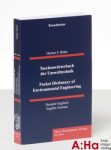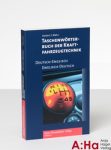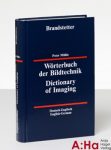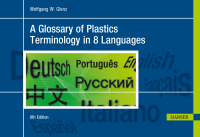Similar articles
Description
Author: Richard Ernst/Udo Amm
Publisher: Anja Hagel Verlag
Language: German-English
Edition: 2023
Keywords: 514,000 terms
The classic among the specialized dictionaries for English-German technical translation in its digital edition: 514,000 entries with ca. 641,000 explanatory comments (subject field labels, definitions, contextual examples, and synonyms) and 756.000 translations from all fields of engineering and technology.
The Dictionary of Engineering and Technology – in short the ERNST – is the classic among technical dictionaries. It looks back on a tradition of more than 70 years. In 1948 the first edition of the German-English volume appeared, three years later its English-German counterpart. Regular updates have consolidated their reputation as well as their market shares and made the Ernst“ a standard reference work.
The “Ernst” provides a well-founded selection of terms from the basic sciences such as mathematics, physics, chemistry and from all important branches of industry, their raw materials, developments and products (mining, metallurgy, mechanical engineering, electrical engineering, electronics, computing, telecommunications, civil and traffic engineering, textile, glass, plastics, wood, paper, printing industries, automotive and environmental engineering and many others).
The present 2023 edition of the Ernst Dictionary of Engineering and Technology German-English / English-German comprises the data
German-English 252,286 entries, edition 2023
English-German 261,859 entries, edition 2023
This revision has followed the well-proven principles of Dr Ernst to present the most important terms from the pertinent fields in a clear and concise manner. Again, the entire dictionary has been revised and adjusted to include recent linguistic and technical developments. Thousands of new entries from all areas of engineering and technology have increased the total number of entries of the Ernst German-English / English-German to 514,145. The emphasis of this revision was electrical engineering and its fundamental principles as well as energy technology.
It was considered important not to present the users with mere word equations, but, whenever necessary, to provide further information. Particularly with polysemous words such as “base”, “match” or “bearing” an attempt has been made to facilitate the selection of the correct translation by the indication of subject areas and by supplying definitions, contextual examples, and pragmatic notes.
In cases where German and English terms are not exact equivalents (e.g. nontraditional machining“ and Abtragen“ (according to DIN 8590) or energy recovery from waste“ and energetische Abfallverwertung“) the differences have been pointed out.
A special focus has been on terms such as “barrel”, “display”, or “screw” that are used in all technical fields alike. At least parts of their meanings often belong to the common, non-technical language, are thus not well defined and present more difficulties in translation than terms such as “nitric acid” or “peel test”, whose definitions have been laid down in scientific works or national and international standards.
With its 514,145 entries the Ernst German-English / English-German continues to be the comprehensive reference for technical translators.









